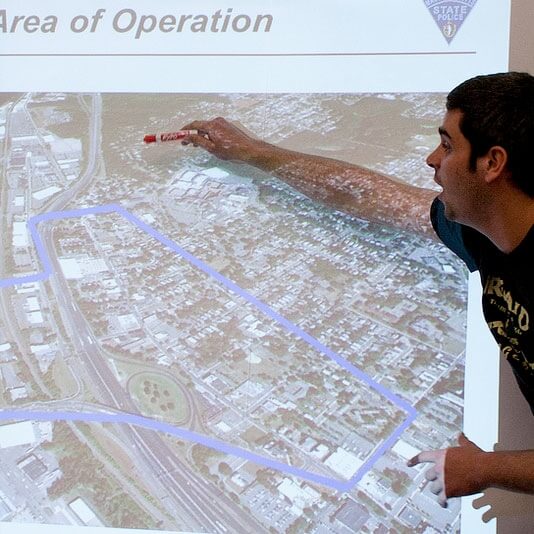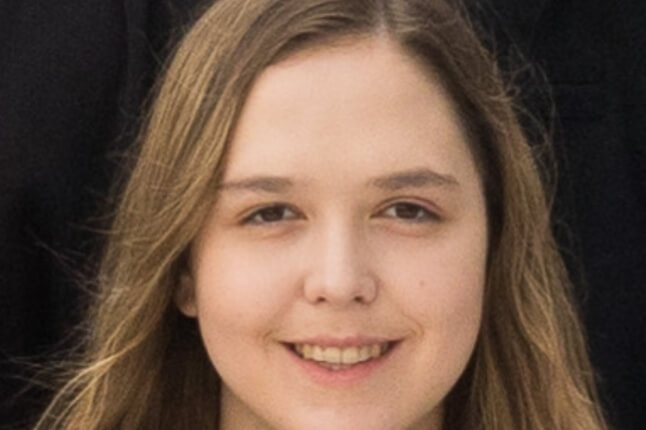News
As part of the ES 96 engineering design capstone course, a group of students collaborated with the Massachusetts State Police to evaluate data-driven community policing. (Photo by Caroline Perry, SEAS Communications.)
The following is an excerpt from an article that appeared in the New York Times on April 30, 2012:
At first glance, the Brightwood neighborhood in this central New England city would seem tohave little in common with war-torn villages in Iraq or Afghanistan.
But when two Massachusetts state troopers, Michael Cutone and Thomas Sarrouf, returned to their jobs here after deployments with a Green Beret unit in Iraq, they noticed troubling parallels.
Like the residents of Avghani, the small Iraqi town where the two had helped establish and train a local police force to combat insurgents, many families in Brightwood, a low-income neighborhood in the North End, lived in fear. Gang members and drug dealers cruised the streets on motor scooters carrying SKS semiautomatic rifles in broad daylight. Gunfire erupted almost daily.
Perhaps the only sentiments running higher than residents' fears were apathy and distrust of police who swooped in to make arrests but did little to involve themselves in the community.
Before their deployments, Cutone and Sarrouf might have been similarly distant. But their experience overseas changed their perspective,convincing them it was futile to fight a war without gaining the trust and support of those most affected by it.
Soin 2009, the troopers proposed trying counterinsurgency strategies they had been trained to use in Iraq. "It was kind of an 'aha' moment," Cutone said. "Gang members and drug dealers operate very similarly to insurgents. I don't mean they're looking to overthrow the state. But the way that they blend into the passive support of the community and use that to their advantage is very similar."
Topics: Academics
Cutting-edge science delivered direct to your inbox.
Join the Harvard SEAS mailing list.
Scientist Profiles
Kit Parker
Tarr Family Professor of Bioengineering and Applied Physics




